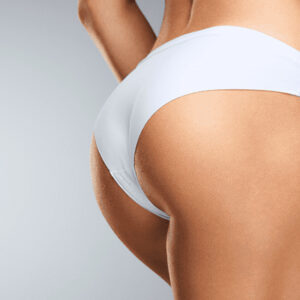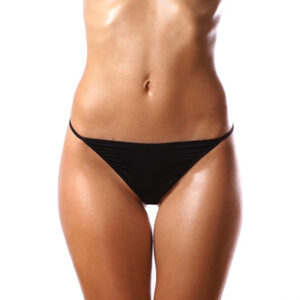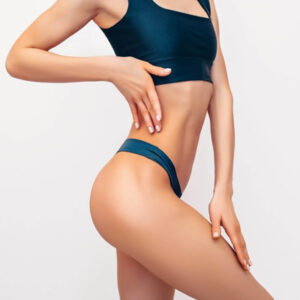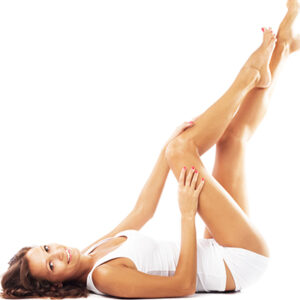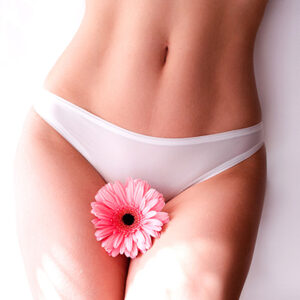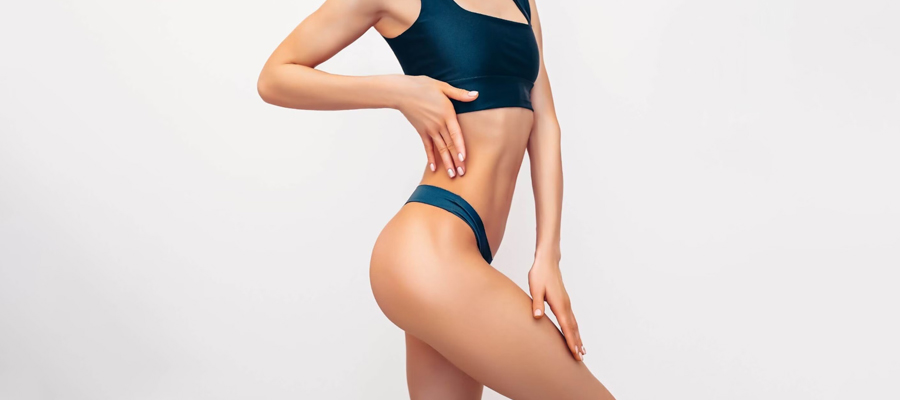
What is Vaser Liposuction?
Liposuction is an application performed by removing excess fat tissues from the abdomen, hips, arms and jowl areas. While liposuction can be performed with surgeries such as sleeve gastrectomy, it can also be done alone. In the classical method of this application, special solutions were injected to the areas where the fat tissues were high, so that the fats would be broken down and become liquid, then thin cannulas were inserted through the incisions opened on the skin and the excess fat tissues were removed.
In today’s technology, without the need for this, by using ultrasonic sound waves, fat tissues are removed without damaging the neighboring tissues and an effective body shaping is performed.
How is Vaser Liposuction done?
In Vaser Liposuction application, areas with excess fat tissues under the skin are affected by targeting only fat cells. In this application, ultrasonic sound waves, which have become today’s technology, are used. The fat tissues liquefied by these sound waves are separated from the skin surface and removed from the body by pulling with thin cannulas.
If the area to be applied in Vaser Liposuction is small, it is performed with local anesthesia and additionally light sedatives, while general anesthesia is preferred if the area to be applied is large or if more than one area will be applied. The reason for this is to reduce the patient’s feeling of pain and pain and increase the comfort and success of the application.
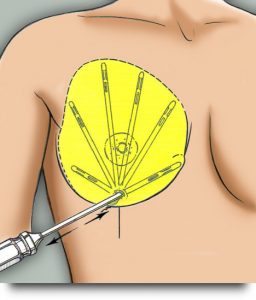
What is the mechanism of action of Vaser Liposuction?
Vaser Liposuction acts on the applied area with three basic mechanisms of action. In the first effect, the photomechanical effect emitted by the laser is based on disrupting the cell structure and integrity of the fat tissues in the application areas.
With this effect, solid fat tissues become liquid. The liquefied fat cells spread to the area between the other cells, and the molten cells are thrown out using thin cannulas and vacuum method with low pressure. This application is also called lipolysis.
The second effect is based on the photomechanical heat effect in the periphery of the application area of the laser energy. Thanks to the photomechanical heat, the blood vessels in the area are constricted and bleeding is prevented. In this way, bloody fluid accumulation, called hematoma, in the application area, bleeding and bruising do not occur. Swelling called edema is less common than classical liposuction.
In the third and last effect, photostimulation effect is created in the area outside the area created by the photomechanical heat effect. Photosimulation provides re-repair in the tissue under the skin and increases the formation of connective tissue, creating tightening, recovery and tension in the skin. Although tightening is observed in the first place, the main effect is seen increasing within months.
Unlike classical liposuction, Vaser Liposuction liquefies the fat tissues in the body using ultrasonic sound waves.
Liquefied adipose tissues are expelled from the body using thin cannulas. The advantage of Vaser Liposuction over classical liposuction is that the cannulas used in classical liposuction have grater-style blades at the end and the cannulas used in Vaser Liposuction are not in this style. Vaser Liposuction does not damage nerves, vessels and surrounding tissues in the application area that are not applied during the application.
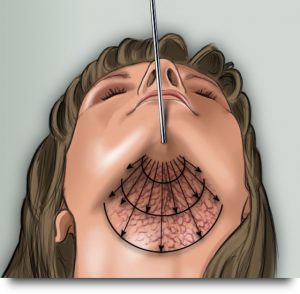
Who is Vaser Liposuction suitable for?
Vaser Liposuction is an application whose reliability has been approved by the American Food and Drug Administration (FDA). This application, which can be applied to anyone without the condition of a woman or a man, can be applied to regions with regional fat, areas with disproportionateness, removal of diet and sports-resistant fat, shaping of the hip, leg, knee and butt region, shaping of the jowl and arm region, belly and bagel that cannot be melted after birth. It is applied in lubrication of the region, butt lift. People who are considering having Vaser Liposuction should go through a doctor’s examination before the application and decide whether they are suitable for the application.
Vaser Liposuction is applied to the abdomen, waist, hip, leg, back, under-bra and jowl areas in women, and to the hip, upper-lower legs, abdomen, waist, back, jowl, calf and knee areas in men. It can also be applied to the breast area in men with gynecomastia.
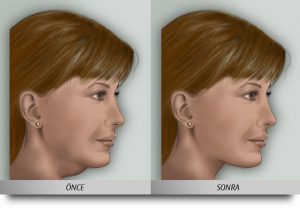
Who is Vaser Liposuction not suitable for?
Vaser Liposuction cannot be applied to people with serious health problems such as diabetes, heart, high blood pressure, cancer, pregnant or suspected pregnancy, nursing mothers. It should not be applied alone to morbidly obese patients.
Morbidly obese people should first get rid of their excess weight with exercise and diet programs and then have vaser liposuction.
In addition, there is an age limit of 18 years in Vaser Liposuction.
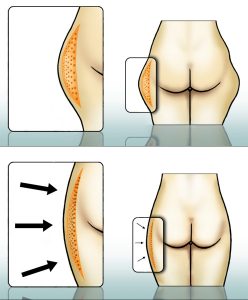
When can one return to social life after Vaser Liposuction ?
Vaser Liposuction is an application preferred by many people thanks to its effectiveness proven by various researches. After Vaser Liposuction is applied, the patient should be kept under observation by the doctor for 3-4 hours. If there is no complication after 3-4 hours, the patient is discharged and the patient can continue his daily life. The patient can take a shower 1-2 days after the application. He has to wait for a while to return to social life.
What should be considered after Vaser Liposuction?
- It is normal for the body to be edematous and swollen in the first week after Vaser Liposuction. This edema is late on its own over time. Since the liposuction corset is beneficial in less edema, this corset must be worn.
- Vaser Liposuction is an application performed under anesthetic creams. Therefore, the pain is minimal. After the application, painkillers prescribed by the doctor can be used.
- After Vaser Liposuction application, patients should consume plenty of water.
- When Vaser Liposuction and diet are done together, the patient should start a diet program as more effective results will be obtained.
- In this process, the patient can take vitamin supplements.
- Patients are asked not to drive for a few days after Vaser Liposuction application.
In the first week after Vaser Liposuction;
- During this period, although it varies from person to person, blue/bruises, tenderness, itching and numbness may be experienced.
- The medical product called liposuction corset should be worn during this period.
- At the end of a week, you can start driving and resume desk work. fasting exercises should be avoided.
In the second week after Vaser Liposuction;
- Liposuction corset should continue to be used.
- Most patients recover during this time.
- Stiffness and bruising may persist in some areas.
- Exercises that are not too heavy can be started this week.
Frequently asked questions with Vaser Liposuction
Are there any side effects of Vaser Liposuction application?
As with other applications, side effects may occur after Vaser Liposuction. These side effects usually appear as bruising, redness, pain, numbness, stinging, tingling, tenderness, swelling, scarring or discoloration at the application site. There is no need to worry as these side effects are temporary and most will get better on their own.
What is the use of wearing a liposuction corset after Vaser Liposuction?
After Vaser Liposuction, the liposuction corset has two purposes. The first purpose of this corset is to minimize edema and bruising with its elastic pressure, and the other purpose is to minimize fluid collection. In addition, the liposuction corset is a medical product that also aims to tighten the skin.
The first days of the recovery period after Vaser Liposuction are very important, wearing a liposuction corset in this process will both increase the success of the application and increase the tightening independently of the application.
Is Vaser Liposuction performed during breastfeeding ?
Vaser Liposuction should not be applied to pregnant women, those with suspected pregnancy or breastfeeding. After these periods are over, Vaser Liposuction can be applied after losing excess weight with exercise and diet.
